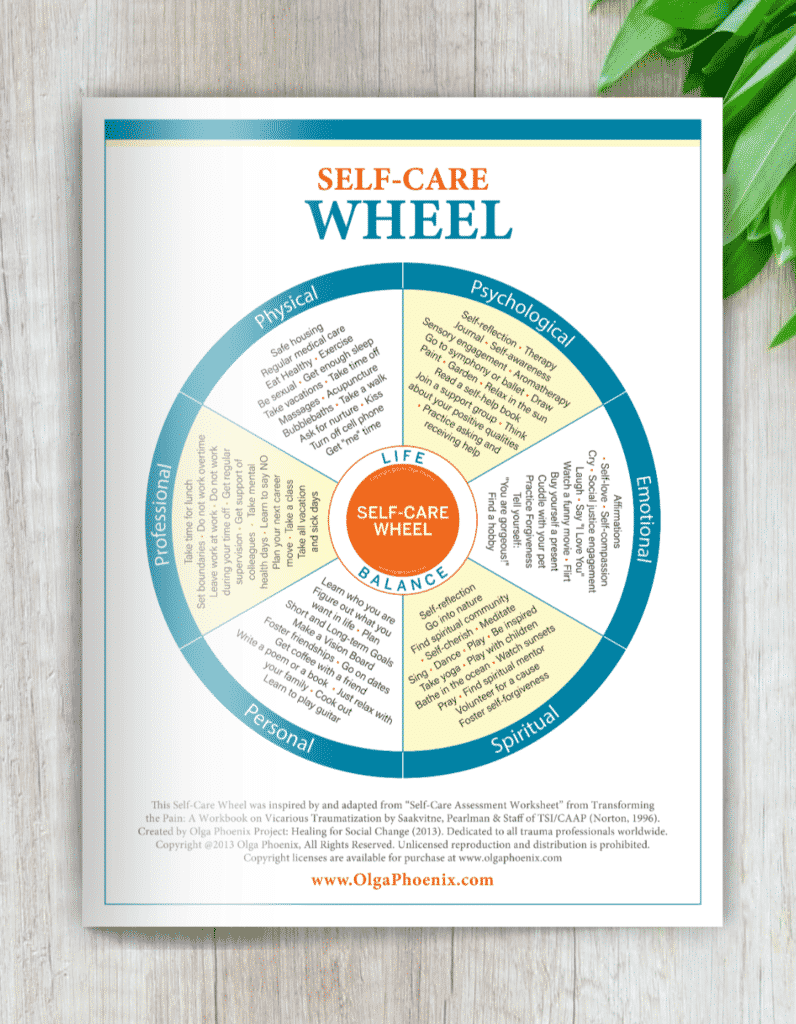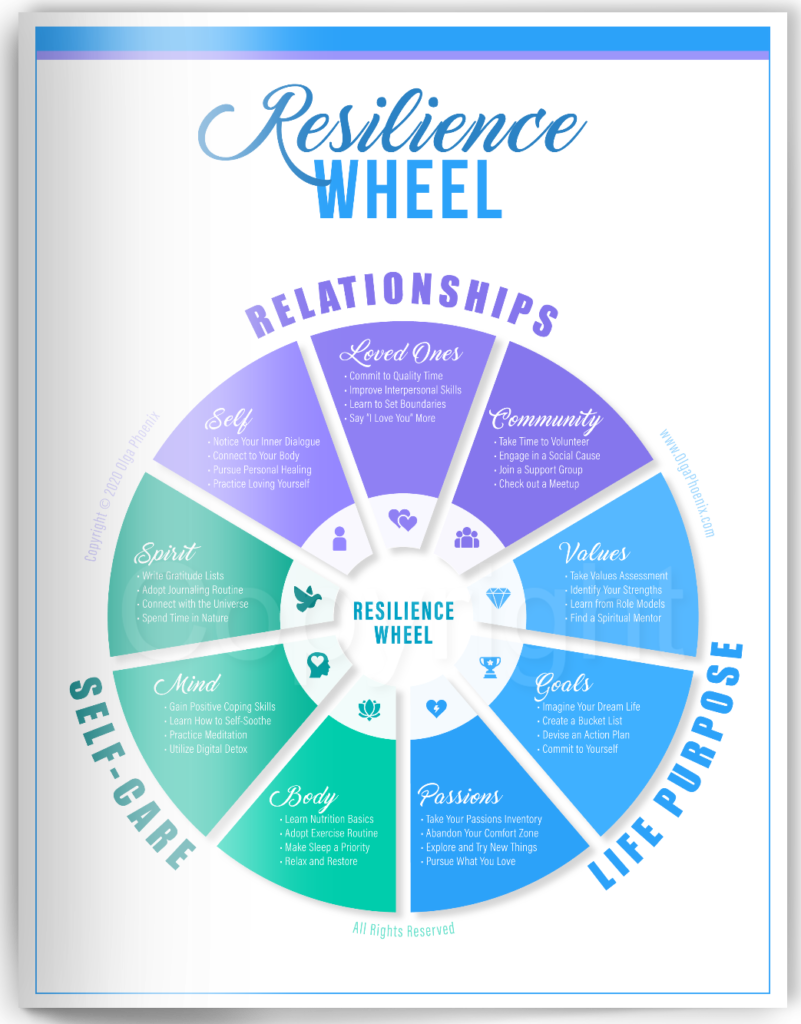100 Best Self-Care Ideas (According to Science)!
100 Best Self-Care Ideas (According to Science)!
In this blog, you’ll discover 100 absolute best and life-changing self-care ideas (according to science) that have the power to absolutely transform your life! Here is what we know about the science of self-care: in the past 20 years, scientists and researchers alike have been making an indisputable case for the incredible benefits of an ongoing and sustainable self-care practice.
We now have undeniable scientific proof that effective self-care practice has the power to:
- Banish stress, anxiety, overwhelm, and burnout
- Improve mood, build resilience, and boost wellbeing
- Create intention, focus, meaning, and life purpose
- Bring time and energy to things and people we love
- Nurture self-love, self-worth, and self-esteem
In short, an effective sustainable self-care practice has the power to completely and dramatically transform our lives!
Most people struggle with not only creating and sustaining a self-care routine, but even coming up with any self-care type ideas beyond massages and bubble baths.
Because of it, they don’t get to enjoy the amazing benefits that come along with practicing self-care.
Massages and bubble baths are great, but they are not enough.
The most effective type of self-care is the one that nurtures multiple areas of our lives and makes us feel at our best.
There are physical, psychological, emotional, spiritual, personal, and professional parts of our lives and our self-care routine needs to nurture all of these.
The majority of the 100 self-care ideas you’ll find below are a part of the Self-Care Wheel, a six-dimensional wellbeing tool, I created in 2013.
It features a multitude of self-care activities specifically addressing physical, psychological, emotional, spiritual, personal, and professional parts of our lives.
In the very beginning, I actually created it just for myself, to help me with my self-care routines-something I always struggled with.
Since then, the Self-Care Wheel has become a #1 Rated Self-Care tool in the world, and has been featured widely in media outlets such as Thrive Global, Popsugar, Positive Psychology, Sporteluxe, and used by educational, medical, mental health, and governmental agencies worldwide! Isn’t it wild?!
The reason I’m sharing this is to show you that this tool has helped hundreds of thousands of people worldwide. And it will help you as well! Please download yours below!
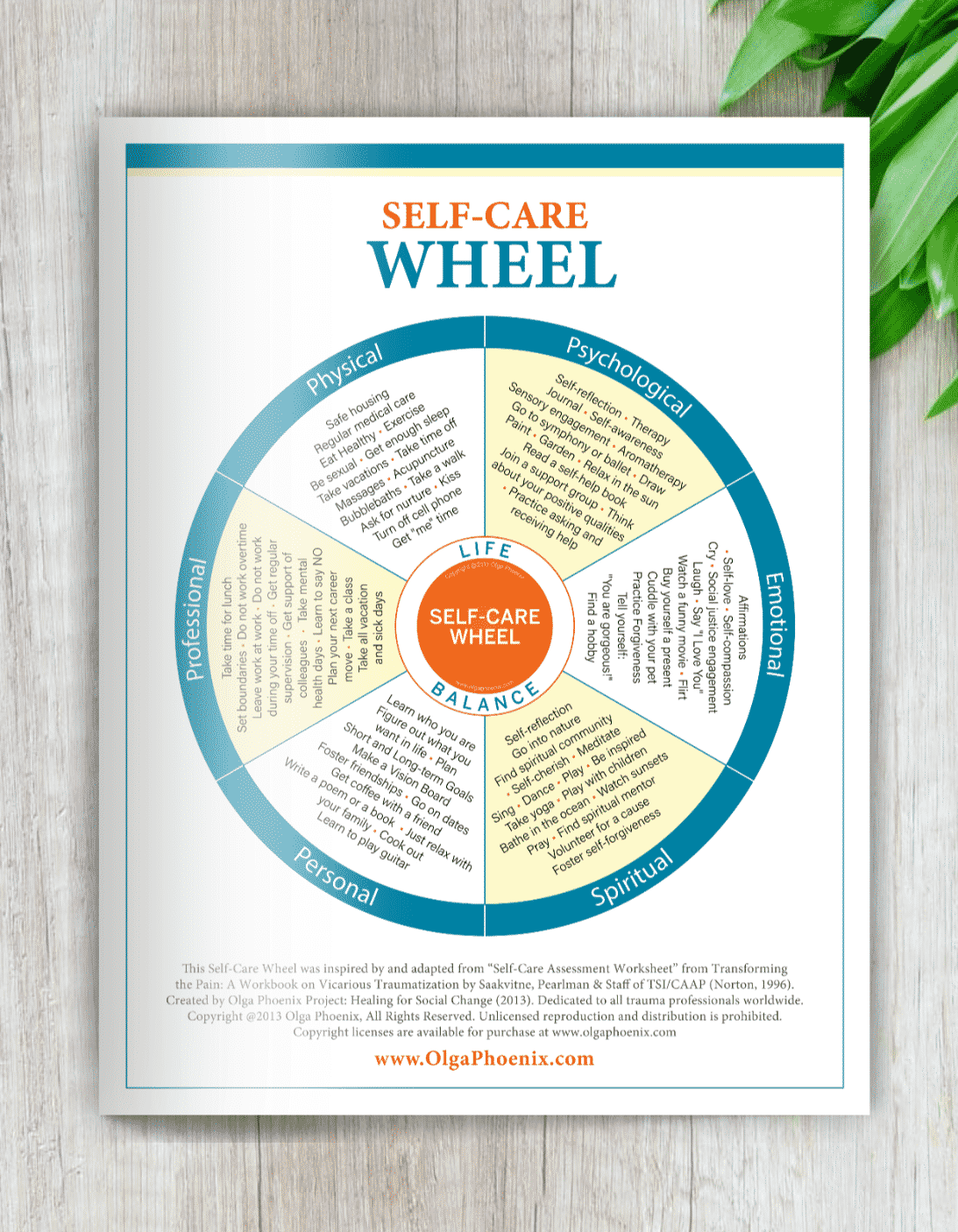
The video below will help show you a three-step formula on how to best utilize the Self-Care Wheel in your life:
100 BEST Self Care Ideas (According to Science)
And now it’s time for a big reveal! Below are 100 best self-care ideas (according to science) that nurture physical, psychological, emotional, spiritual, personal, and professional parts of our lives.
Please review them all and see which ones you want to adopt for your own personalized and sustainable self-care routine.
Because your beautiful, joyful, meaningful, and authentic life you love is just a self-care routine away!
Don’t wait another minute to start creating yours!
BEST SELF-CARE IDEAS FOR PHYSICAL DIMENSION
- Great Quality Sleep

sleep for physical self care
Sleep deficiency has several detrimental effects on our mental and physical health, including cardiovascular and metabolic diseases, and impaired cognitive performance. Optimizing and prioritizing our sleep habits improves mood, mental and physical performance, metabolism, and energy levels. Getting on a consistent sleep schedule, monitoring caffeine intake, eliminating screens at least 30 minutes before bedtime, creating a before-bed relaxation routine- all can make a huge difference in the quality of our physical and mental health. Try the Headspace app to help you sleep better.
- Learn to Self-Soothe
We will always have stress in our lives. That’s just life, it comes with its ups and downs. As a result, we will have both positive and negative emotions. The trick is to discover ways to self-soothe and cope with those negative emotions when they come (because they will) in a positive, productive, and sustainable manner. Both negative and positive feelings have an equally important part in our human development and growth, and learning how to effectively manage difficult emotions strengthens our emotional wellbeing. Some of the best self-care for self-soothing examples: journaling, meditation, mindful walking, exercising, coloring, taking a cold or hot shower, and saying positive coping statements to yourself.
- Nutritious Meals
Healthy eating starts with learning what our body needs to feel nourished and how we can fulfill these needs with nutritious foods we like and enjoy. The next step is learning the nutritional basics about the foods we consume and what fuel the human body needs to be healthy and strong. I really like the free Fooducate app for learning the nutritional values and benefits of different foods, and it also tracks your activity levels. Based on all this information we can make a solid, educated, sustainable, and very easy-to-follow meal plan for ourselves, which will give us a much higher chance of integrating this new healthy routine into our lives.
- Moving Your Body

playing at the beach for physical self care
Any activity will do, bonus points if you actually enjoy it and can fit in your schedule! Think solo dancing in your living room, walking up and down your stairs, Zumba class, Yoga with Adrienne Youtube channel, pedaling a stationary bike for 15 minutes after lunch, doing jumping jacks in your office, or walking an extra loop at the mall. In other words, moving your body does not mean an hour-long advanced cycling class at 5 am (unless that’s your thing of course) but any realistic activity for your lifestyle, routine, and personal preference.
- Progressive muscle relaxation
Progressive muscle relaxation is one of best self-care activities which involves a two-step process in which a person systematically tenses and relaxes different muscle groups in the body. Helps us to spot and counteract the first signs of the muscular tension that accompanies stress and beat it before it grabs hold. Also, an excellent tool to practice to fall asleep fast.
- Massages
Massages are the best self-care idea to can help you release any physical strain you may be carrying and are really great in taking care of your body especially if there is a lot of stress in your life. The relaxation produced by a good massage can release the stress hormones and greatly improve our physical and mental health.
- Acupuncture
Acupuncture is one of the best self-care ideas and treatments for various body ailments. Fine needles are inserted at specific points to stimulate, disperse, and regulate the flow of vital energy, and restore a healthy energy balance. The goal is to relieve a health condition or symptom, such as pain. This practice comes from traditional Chinese medicine and various scientific studies have confirmed its effectiveness.
- Kissing

kissing for physical self care
Here is one of the best self-care ideas and activities that most of us quite enjoy-yes, I’m talking about kissing! By activating the pleasure regions of the brain, kissing induces your brain to release a mix of hormones such as oxytocin, dopamine, and serotonin, which are responsible for feelings of happiness, pleasure, affection, and connection. It also reduces the stress hormone cortisol. So… kiss away!
- Turn off your cell phone
Turning off your phone is one of the best self-care ideas to calm nerve centers in your brain. Turning off your phone stops the bombardment of messages, emails, social media notifications, people, and apps vowing for your attention, and not allowing you space to concentrate on tasks on hand or just taking sweet old time to relax, de-stress, and just be in the present. Turning the off button immediately lowers stress and increases physical and mental health, as well as energy levels.
- Tai Chi
Originally developed for self-defense, Tai Chi has evolved into a graceful form of exercise that’s now used for stress reduction and a variety of other health conditions. Often described as meditation in motion, Tai Chi is the best self-care idea to promote serenity through gentle movements.
- Reflexology
This modality is based on the idea that specific points on the feet and hands correspond with organs and tissues throughout the body. With fingers and thumbs, the practitioner applies pressure to these points to treat a wide range of stress-related illnesses, producing numerous positive health effects.
- Reiki
Practitioners of this ancient Tibetan healing system use light hand placements to channel healing energies to the recipient and to assist the recipient in achieving spiritual focus and clarity. Reiki is the best self-care idea to promote relaxation, reduce stress and anxiety, and promote a positive mental state.
Other physical dimension self-care activities:
- Regular medical care
- Being sexual
- Taking vacations
- Taking time off
- Bubble baths
- Getting hugs
- Asking for nurture
- Taking a walk
BEST SELF-CARE IDEAS FOR PSYCHOLOGICAL DIMENSION
21. Gratitude Journaling

Time and time again, a gratitude practice was linked to better mental health and higher levels of happiness, as well as named of the best self-care activities to dramatically boost our overall wellbeing. Gratitude journaling focuses on positive memories and experiences and builds up our internal positive reference bank, as well as creates a sense of fulfillment and appreciation of what we already have. As a result, gratitude creates a positive outlook on life, boosts wellbeing, improves relationships, and builds resiliency.
22. Self-reflection
Self-reflection practice is one of the best self-care ideas to build self-awareness, self-knowledge, and inner strength. It gives us a better understanding of what’s important to us and why, what are our pains and joys, and what are parts of us that need healing and attention. In other words, with self-reflection, we have more clarity on who we are as human beings and what we need to live a life we love. Some of the things we can do to help us self-reflect: scheduling time for regular contemplation, getting a spiritual mentor, spending time in nature, finding a like-minded spiritual community, practicing mindful body scans, and listening to guided meditations.
23. Guided imagery
Guided imagery is a process of directed thoughts and suggestions that guide your imagination toward a relaxed, focused state. You can use an instructor, tapes, or scripts to help through this process.
24. Therapy
Counseling is an amazing and highly productive form of self-care and an ongoing practice that dramatically our physical and mental health. Talking the situation out with a professional greatly reduces the power of negative thoughts, emotions, and feelings. Plus, they always have great advice on how to deal with a situation-win/win overall!
25. Deep-breathing
A simple, yet powerful, relaxation technique and is the cornerstone of many other relaxation practices, and can be combined with other relaxing elements such as aromatherapy and music.
26. Yoga
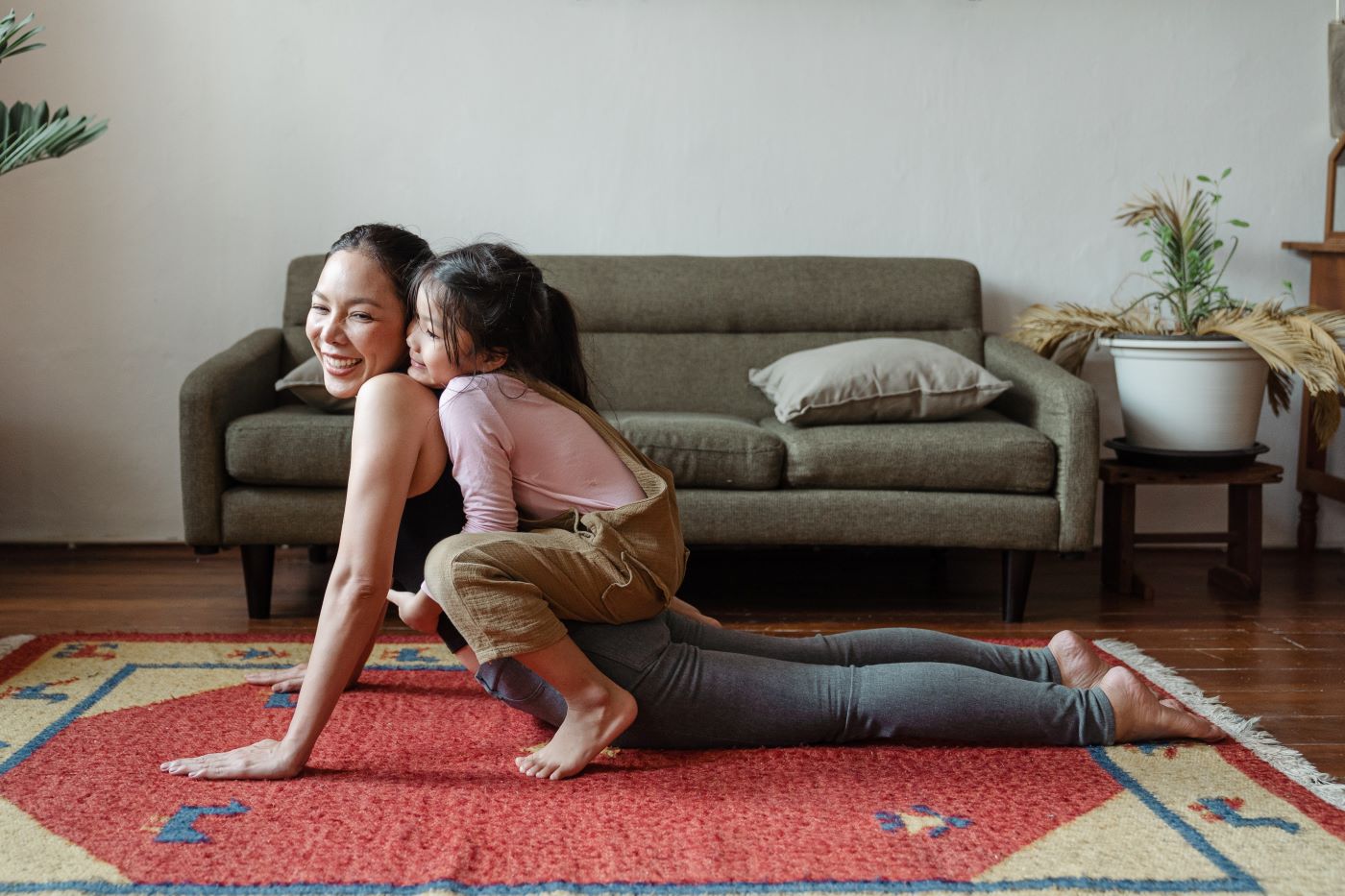
A physical and mental practice for attaining the physical and emotional balance, achieved through a series of postures and breathing exercises. Yoga practice is about self-healing via self-awareness, acceptance, and movement. It helps to shows us how to handle internal and external challenges that we face in our daily lives. Check out Yoga with Adriene Youtube Channel, where you can find simple routines from beginner to expert levels! I’m not a yoga expert at all, and love how simple Adriene makes yoga lessons.
27. Aromatherapy
Aromatherapy is an alternative medicine that involves the use of essential oils, the power of smell to help with both physical and emotional issues. Essential oils are extracted from plants, and oils are massaged into the skin in diluted form, inhaled, or placed in baths.
28. Drawing
Self-care can be enhanced by the use of art. Because art makes us feel deeply connected to ourselves, puts us into the present moment, helps us creatively express ourselves, and even works through some emotional and mental challenges and struggles we might be dealing with. You don’t have to be an artist to benefit from this! Also, there are always coloring books!
29. Joining a support group
We are social animals and have an innate need for human contact and interaction. Strong interpersonal relationships and support groups provide a sense of safety, create belonging, improve self-esteem, and as a result act as a protective barrier against life stresses.

30. Thinking about your positive qualities
One of the greatest contributors to our resilience and wellbeing is the quality of our relationships with ourselves. Some of the things we can do to foster relationships with ourselves are thinking about our positive qualities, noticing what’s wonderful about ourselves, what our strengths are, what challenges we have overcome, how well we treat others. Thinking positively about ourselves builds our sense of self-compassion and self-love, as well as greatly challenges the inner critic.
31. Practice asking and receiving help
Accepting that we can’t handle everything on our own and asking for help when we need it is sometimes all we need to do, and the act of doing this is very brave. Perhaps you’re feeling emotionally overwhelmed because you’re trying to face the world on your own. You don’t have to do this! A problem shared is a problem solved! Please seek help when you need to, it will change your life!
Other psychological dimension self-care examples:
32. Fostering self-awareness
33. Sensory engagement
34. Painting
35. Going to symphony or ballet
36. Relaxing in the sun
37. Gardening
38. Reading a self-help book
BEST SELF-CARE IDEAS FOR EMOTIONAL DIMENSION
39. Self-love

Self-love is about striving to treat yourself like your best friend. It’s a feeling of self-appreciation, self-kindness, and self-acceptance that grows over time as a result of continuous nurturing actions that support our wellbeing and growth. It’s difficult to practice self-love but it’s an integral part of our wellbeing and figuring out your self-love practices is incredibly important. Check out this “100 Things I Love About Myself” list for some inspiration.
40. Self-compassion
Self-compassion is a positive, nurturing, forgiving, and accepting attitude we show ourselves. Some of the self-compassion in action examples: talking to yourself as you would to your best friend, challenging your inner critic, choosing to be tolerant of your shortcomings, nurturing yourself through hard times, and being patient with yourself.
41. Positive self-talk
Paying attention to the way you speak to yourself is the best way to begin caring for yourself. Recognizing when you’re engaging in negative self-talk is a crucial first step toward cutting this bad habit out of your life. The next phase is to replace the negative self-talk with loving and caring words. Step three is practice, practice, practice, and giving yourself a break when you don’t do it perfectly.
42. Detox from social media
Although social media isn’t bad in itself, but millions of people around the world are addicted to it. Numerous research studies show that very frequent engagement with social media creates depression and lowers self-esteem, especially in female users. Try a media detox and see if it positively impacts your life.
43. Affirmations
An affirmation is a positive statement of what you want in your life, expressed in the present tense. Affirmations are the tools for creating something you want, by “tricking” your mind to believe the stated concept while beating the negative thinking and building up your positivity bank. Example: “I’m strong, remarkable, and loving. I can and I do.”
44. Laughing

Laughter releases endorphins and serotonin which are natural chemicals that elevate our mood, help us relax, and even reduce physical pain. Interestingly enough, even if our smile is not genuine, just the physical act of smiling can help our bodies release endorphins and serotonin, thus boosting our mood.
45. Finding a hobby
Finding a hobby and making it a solid part of your self-care routine can help to increase your self-esteem, boost your mood, and bring more fun to your life, whether you’re into practicing something artistic, trying to relax and escape, or looking to step outside your normal routine.
46. Telling yourself: ”You are gorgeous!”
Learning to accept compliments, starting with yourself, is a great self-care practice for boosting our self-esteem, appreciating ourselves more, and helping us find more things about ourselves we value and love. The next step-starting to accept compliments from others just by saying “thank you” instead of trying to devalue ourselves by denying the compliment. This practice helps your relationship with yourself and others!
47. Forgiveness
The act of forgiveness is for us, not for the ones we forgive. It’s about setting ourselves free, and letting negative feelings such as resentment, fear, and anger disappear out of our lives. Studies suggest we forgive, we have better sleep, have less physical illness, better heart function, and higher quality of life.
48. Crying
Crying is very healing for us, emotionally and physically. Some studies suggest that crying is a natural way for your body to release stress hormones. Tears have been also shown to cause the release of endorphins, feel-good, pain-relieving hormones.
49. Cuddling with your pet

Pets improve the quality of our lives in so many ways! They love us unconditionally, they keep us active, they always want to hang out, and support us when we are feeling sad, and make our lives meaningful and less stressed. In short, pets are magical and everyone should get one! Am I right?:)
50. Social justice engagement
When we feel the world around us is unjust and unfair, it makes us feel powerless and defeated. Engaging in activities like social justice helps us feel more powerful, active, not a victim, as well as gives our life purpose. All of these are incredibly important for our health and wellbeing.
Other self care examples for the emotional dimension:
51. Saying “I love You”
52. Watching funny movie
53. Flirting
54. Buying yourself a present
BEST SELF-CARE IDEAS FOR SPIRITUAL DIMENSION
Nurturing our spiritual side doesn’t necessarily mean adhering to any particular religion or philosophy. Instead, it’s a way of supporting the most delicate, and profound, parts of our humanity, the spiritual force that brings all the other parts together.
55. Meditating
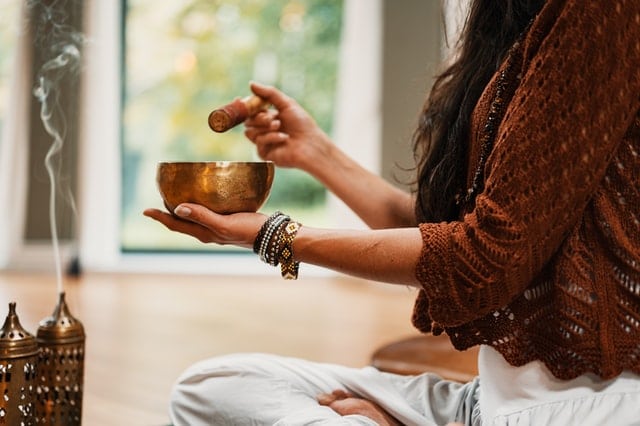
Meditation has been used for thousands of years to facilitate healing. The calming effects of meditation allow the brain and body to work together more effectively, resulting in clarity of thought, lower blood pressure, and a calmer nervous system. Meditation is also an amazing tool for cultivating our relationship with our Higher Power (should we have one). I use the Insight Timer app for all my meditating needs. I think it’s the best meditation out there, with literary thousands of free and amazing mediations.
56. Dancing
First of all, dance is fun! Just look at all these videos on Tik Tok! Second, dance improves muscles, heart, and lung function, builds stronger bones, creates better coordination, enhances brain acuity, and helps us to have a better relationship with our body, which can lead to improved interpersonal interactions. For a lot of people, dance is a very personal spiritual experience as well.
57. Seeking Spiritual Knowledge
The practice of expanding our spiritual knowledge can be life-long. Continually learning, experimenting, and practicing can not only improve our understanding of spirituality and our spiritual wellbeing but help cultivate life purpose and meaning, and expand our worldview.
58. Praying
If we have a relationship with a Higher Power or want to develop one, praying is a tool to do this. It makes us feel not alone, lets us express our worries and fears, contemplate, ask for direction, gives us a moment to pause and reflect, as well as fosters self-compassion and self-acceptance.
59. Going into nature

Nature gives us so many fantastic opportunities to be inspired by the beauty of the Universe, to experience a sense of gratitude for being alive and in awe, to reconnect with ourselves and our Higher Power (should we have one), to just be, here and now. Through nature, we have a wonderful chance to feel better, to improve the quality of our lives, and to boost our wellbeing.
60. Finding spiritual community
The like-minded spiritual community can give us a sense of purpose and belonging, help us develop a stronger connection to our intuition, teach us to foster serenity, give us roots and support, as well as nurture our interpersonal relationships.
Other self care examples for the spiritual dimension:
61. Singing
62. Playing
63. Being inspired
64. Playing with children
65. Bathing in the ocean
66. Self-cherishing
67. Watching sunsets
BEST SELF-CARE IDEAS FOR PERSONAL DIMENSION
68. Learning Who You Are

When we get to know ourselves, figure out where we are going in life, we feel that our existence is meaningful and purposeful. This makes us feel more empowered, centered, peaceful, and joyful. This is because knowing ourselves as well as our purpose gives us clarity in our lives, helps us carry on when things get tough, gives us a sense of personal accomplishment, and a strong feeling that we matter.
69. Planning Short and Long-term Goals
Intentionally pursuing our personal and professional growth, setting and achieving goals, learning or trying something new, boosts our mental wellness by producing a sense of personal accomplishment, improving self-confidence, raising self-esteem, and creating a sense of purpose in life.
70. Making a Vision Board
A Vision Board is a collection of images, words, and colors that reflect your visions and desires for your life. It is a tool that allows you to become clear on what you really want. Becoming clear on what you want is the key to manifesting your vision. Brainstorm about what you’d like your life to be like, and put your dreams as a collage on a large sheet of paper. Put it in a prominent place in your home to remind yourself daily about your goals and dreams.
71. Fostering friendships
We are social animals and have the innate need for human contact and interaction. Strong social networks provide a sense of safety, create belonging, improve self-esteem, and as a result act as a protective barrier against life stresses.
72. Getting coffee with friends

We can nurture our relationships by regularly planning fun activities with loved ones, by improving our interpersonal communication skills, by setting and sticking to our boundaries, by joining a support group, and by engaging in volunteering for social causes. Real investment and commitment to nurturing our relationships with loved ones and our community greatly influence our overall resilience, wellbeing, and health.
73. Learning to play guitar
Doing something you love or enjoy every day is absolutely vital to our wellbeing. If you find yourself feeling like your life passes you by in the realities of every day, take action! You’d be shocked how much better you feel if you added a bit more positivity to your daily routine!
74. Getting out of debt
Sometimes debt is completely unavoidable (I’m looking at you, student loans!). But having debt is a very stressful burden, creating numerous problems, including anxiety, guilt, and relationship stress. Alternatively, learning how to manage debt and getting financially fit by having savings, budgeting, following a debt management plan dramatically improves our physical and mental wellbeing and fosters a strong financial future.
75. Just Relaxing

The main goal is to establish a daily habit that allows us to calm our minds and minimize stress. With our continually hectic, busy lives, many people find it difficult to relax and take it easy, but every little bit helps to improve our physical well-being. Coloring with your children, watching a favorite show, or taking a hot bath are some examples of relaxation activities.
76. Volunteering
Helping others, of course, helps others. But it helps us so much more! It gets us out of ourselves, out of our own problems and life concerns, and gets us to focus on someone else. This process makes us feel good about ourselves, as keeps us grateful for what we have in our lives.
Other self-care activities for the personal dimension:
77. Figuring out your life plans
78. Knitting a blanket
79. Giving yourself a break
80. Writing a poem or a book
81. Spending time with your family
82. Cooking out
83. Going on dates
BEST SELF-CARE IDEAS FOR PROFESSIONAL DIMENSION
84. Taking time for lunch

If you work in an office, getting up from your desk and changing your environment is vital for your mental health. You’ll be refreshed and more effective when you return. Plus, staring at your spreadsheets and emails while eating lunch is probably not good for your digestion, am I right?
85. Setting boundaries
Do you find yourself saying “yes” to things that you really don’t want to do? Do you wind up feeling exhausted as a result of this? Imposing healthy restrictions on your time, space, and company is crucial for our self-esteem, physical, mental health, and very much needed to help us as well as undeniably important to us accomplishing our goals, living life we love, and leaving us time to do things we enjoy.
86. Not working overtime
Leaving work at work is absolutely paramount for humans in order for them to take much needed reprieve, rest, and refuel themselves before they return to work. Burnout is the only outcome of continually working long hours. If you can help it, don’t do it.
87. Getting regular supervision
Regular supervision lets both parties get to know one another better, find out more about strengths and challenges, likes and dislikes, and allows for a more open, strength-based teamwork approach. Once we establish trust with our supervisor it is so much easier to ask for help, for a mental health day, for a promotion, or a better-suited project.
88. Not working throughout a vacation

Working without a break, working on vacation or holidays has been shown to be detrimental to employees’ health. Now only that, the relationships with family and friends start suffering as well from lack of attention and time together. Put the laptop away and enjoy your vacation, the emails can wait.
89. Getting support of colleagues
Support and help from teammates can help us feel at ease, build trust with one another, and be valued and appreciated at work especially when we encounter obstacles. Having a coffee together, discussing our day, solving a challenging work task can create a sense of belonging and thus make our work life much more comfortable.
90. Learning to say NO
Learning to say ‘no’ to protect our time, energy, and mental and physical health is one of the most important methods to practice self-care. At the very minimum, we can allow ourselves some time to think about it before saying yes. By changing the cycle of routinely saying yes to everything, we’ll have more time, energy, and stamina to do our own life as support others when we are rejuvenated.
91. Planning a walk-and-talk meeting
It doesn’t cost anything to do your meeting with a colleague on a walk around the block or to the nearby park, but the benefits are just outstanding! Getting some steps in, some fresh air, and being out of the office, and maybe making a new work friend-priceless!
92. Taking all vacation and sick days
Its paid time off, and many people came before us who for centuries were trying to make this a reality and now it is a reality we get to enjoy. It’s our right that is given to us and protected by law. Let’s just take advantage of it, especially if we are feeling under the weather or need to recover from a case of burnout. Also, vacations are great! Even if they are short staycations in our apartment with a great book and our best bud, the cat.
93. Going to professional trainings

Professional development allows us to feel more confident and effective in our job, it gives us tools to succeed and advance on our career path. All of this is very important for our self-esteem, sense of accomplishment and purpose, and fantastic for our psychological health. If your employer is footing the bill, take great advantage of all of these opportunities, sometimes you even get to go to a very nice tropical place for professional conferences and those are pretty amazing!
94. Taking exercise breaks
Moving our body not only improves physical health but it has also been shown to improve emotional and mental wellbeing due to the production of endorphins. When you’re feeling stressed or fatigued, take a short walk around the office building to boost your attitude and productivity.
Other self care examples for the professional dimension:
95. Creating a work support group
96. Planning your next career move
97. Using Employee Assistance Program
98. Collaborating with other agencies
99. Taking a class
100. Networking
And here they are, ladies and gents, the 100 self-care ideas for creating the life you love!
This life is within reach your reach. It starts with the 1st step towards yourself, your wellbeing, your happiness. Start today. To have most of these activities in one spot, don’t forget to download the Self-Care Wheel handout below. Don’t wait another minute to get to know and to choose YOU!

PS. Please leave me a comment below what were your favorite self-care activities and examples from this list? And how do you foster self-care in your life? Can’t wait to hear from you!
PSS. Let’s be social! Follow me on Instagram, Facebook, and LinkedIn for more self-love and self-care tips, inspiration, and tools! Looking forward to connecting with you! Go forth, do incredible things, and self-care! In deep gratitude for all you are, Olga
About the author:
Olga Phoenix, MPA, MA is the world’s leading self-care, resilience, and vicarious trauma prevention expert, speaker, trainer, and best-selling author. Featured widely in media outlets such as Women’s Health, Thrive Global, Authority Magazine, Popsugar, and Positive Psychology, she has been inspiring organizations and individuals to grow and thrive.





